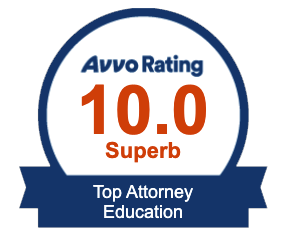This is the second part of series of posts on Children with ADHD: Special Education and IEPs. In the first post on this subject, I laid the groundwork why it is so important to properly locate, identify and evaluate a child with ADHD/ADD. As I said, the majority of children that I represented have a diagnosis of ADHD or ADD. So what is ADHD? According to the DSM-V, ADHD is defined as follows:
- A persistent pattern of inattention and/or hyperactivity-impulsivity that interferes with functioning or development:
- For children, six or more of the symptoms (Table) have persisted for at least 6 months to a degree that is inconsistent with developmental level, and that negatively impacts directly on social and academic/occupational activities. Please note: the symptoms are not solely a manifestation of oppositional behaviour, defiance, hostility or failure to understand tasks or instructions1
- For older adolescents and adults (age 17 and older), five or more symptoms are required (Table)
- Several inattentive or hyperactive-impulsive symptoms present prior to age 12 years
- Several inattentive or hyperactive-impulsive symptoms present in two or more settings (e.g. at home, school or work; with friends or relatives; in other activities)
- Clear evidence that the symptoms interfere with, or reduce the quality of, social, academic or occupational functioning1
- Symptoms do not occur exclusively during the course of schizophrenia or another psychotic disorder, and are not better explained by another mental disorder (e.g. mood disorder, anxiety disorder, dissociative disorder, personality disorder, substance intoxication or withdrawal).
| Symptoms of inattention | Symptoms of hyperactivity and impulsivity |
| Often fails to give close attention to detail or makes mistakes | Often fidgets with or taps hands and feet, or squirms in seat |
| Often has difficulty sustaining attention in tasks or activities | Often leaves seat in situations when remaining seated is expected |
| Often does not seem to listen when spoken to directly | Often runs and climbs in situations where it is inappropriate (in adolescents or adults, may be limited to feeling restless) |
| Often does not follow through on instructions and fails to finish schoolwork or workplace duties | Often unable to play or engage in leisure activities quietly |
| Often has difficulty organising tasks and activities | Is often ‘on the go’, acting as if ‘driven by a motor’ |
| Often avoids, dislikes or is reluctant to engage in tasks that require sustained mental effort | Often talks excessively |
| Often loses things necessary for tasks or activities | Often blurts out answers before a question has been completed |
| Is easily distracted by extraneous stimuli | Often has difficulty waiting their turn |
| Is often forgetful in daily activities | Often interrupts or intrudes on others |
What is important to note is that you child may exhibit some of these symptoms but not others. In other words, there are degrees of ADHD, which may be categorized as mild, moderate or severe if you will. The greater number of symptoms with a marked severity, for example, should be considered the IEP team in developing an IEP. Again, some children with ADHD have such mild symptoms that they may only require a Section 504 accommodations plan. One of the problems with a Section 504 accommodations plan is that it does not require the specificity of an IEP. I wish I could count the number of times throughout the years that I received calls from parents who complain their child’s Section 504 accommodation plan is not working or that is not being implemented. This is not to say that a child with ADHD who has an IEP is guaranteed that it will work well for the child and that it is properly implemented. To the contrary, I have found many parents complain their child’s IEP is inadequate and does not address his educational needs. It is for this reason that a comprehensive evaluation – whether it is medical, psychological or psychoeducational or a combination of them – should list or mention all of the symptoms of the child’s ADHD. The IEP team should carefully consider and evaluate how each of these symptoms adversely affects the child’s educational performance. The IEP team should develop goals and objectives to address each symptom that adversely affects the child’s educational performance.
There is so much more to discuss when developing an IEP for a child with ADHD. I will wait until the next post to provide guidance on how to best develop an IEP for a child with ADHD/ADD.

